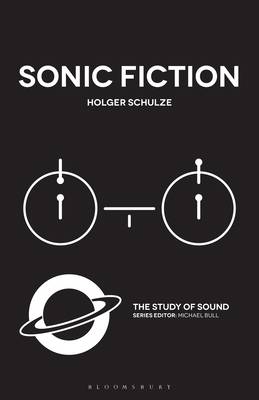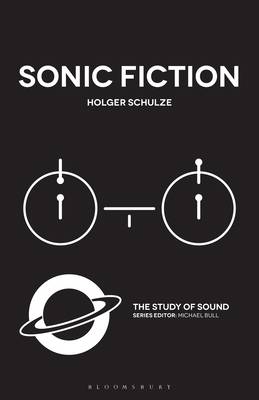
Bedankt voor het vertrouwen het afgelopen jaar! Om jou te bedanken bieden we GRATIS verzending (in België) aan op alles gedurende de hele maand januari.
- Afhalen na 1 uur in een winkel met voorraad
- In januari gratis thuislevering in België
- Ruim aanbod met 7 miljoen producten
Bedankt voor het vertrouwen het afgelopen jaar! Om jou te bedanken bieden we GRATIS verzending (in België) aan op alles gedurende de hele maand januari.
- Afhalen na 1 uur in een winkel met voorraad
- In januari gratis thuislevering in België
- Ruim aanbod met 7 miljoen producten
Zoeken
Omschrijving
Sonic fiction is everywhere: in conversations about vernacular culture, in music videos, sound art compositions and on record sleeves, in everyday encounters with sonic experiences and in every single piece of writing about sound. Where one can find sounds one will also detect bits of fiction.
In 1998 music critic, DJ and video essayist Kodwo Eshun proposed this concept in his book "More Brilliant Than The Sun: Adventures in Sonic Fiction". Originally, he did so in order to explicate the manifold connections between Afrofuturism and Techno, connecting them to Jazz, Breakbeat and Electronica. His argument, his narrations and his explorative language operations however inspired researchers, artists, and scholars since then. Sonic Fiction became a myth and a mantra, a keyword and a magical spell.
This book provides a basic introduction to sonic fiction. In six chapters it explicates the inspirations for and the transformations of this concept; it explores applications and extrapolations in sound art and sonic theory, in musicology, epistemology, in critical and political theory. Sonic fiction is presented in this book as a heuristic for critique and activism.
In 1998 music critic, DJ and video essayist Kodwo Eshun proposed this concept in his book "More Brilliant Than The Sun: Adventures in Sonic Fiction". Originally, he did so in order to explicate the manifold connections between Afrofuturism and Techno, connecting them to Jazz, Breakbeat and Electronica. His argument, his narrations and his explorative language operations however inspired researchers, artists, and scholars since then. Sonic Fiction became a myth and a mantra, a keyword and a magical spell.
This book provides a basic introduction to sonic fiction. In six chapters it explicates the inspirations for and the transformations of this concept; it explores applications and extrapolations in sound art and sonic theory, in musicology, epistemology, in critical and political theory. Sonic fiction is presented in this book as a heuristic for critique and activism.
Specificaties
Betrokkenen
- Auteur(s):
- Uitgeverij:
Inhoud
- Aantal bladzijden:
- 192
- Taal:
- Engels
- Reeks:
Eigenschappen
- Productcode (EAN):
- 9781501334788
- Verschijningsdatum:
- 23/01/2020
- Uitvoering:
- Hardcover
- Formaat:
- Genaaid
- Afmetingen:
- 140 mm x 216 mm
- Gewicht:
- 367 g

Alleen bij Standaard Boekhandel
+ 339 punten op je klantenkaart van Standaard Boekhandel
Beoordelingen
We publiceren alleen reviews die voldoen aan de voorwaarden voor reviews. Bekijk onze voorwaarden voor reviews.









